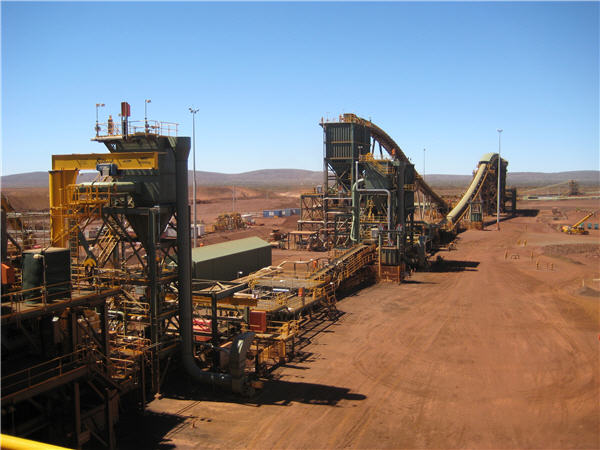
A mining operation in Western Australia’s Pilbara region.
For the first time in 40 years, a Japanese prime minister has visited Western Australia’s Pilbara region, home to one of the world’s biggest iron-ore deposits, highlighting his nation’s importance to Australia’s mining industry.
Shinzo Abe toured the West Angelas iron-ore mine on Wednesday together with Australian Prime Minister Tony Abbott, Rio Tinto (NYSE:RIO) CEO Sam Walsh and Rio’s chief executive of iron ore Andrew Harding. The mine is a joint venture between Rio, Mitsui (TYO:8031) and Nippon Steel (TYO:5401).
The Pilbara visit follows Tuesday’s signing of a free trade agreement between the two countries that will further open Japan to Australian exports. The deal has been called a giant step forward in an already mutually beneficial trade relationship and a major opportunity for Australian miners.
The Australian Journal of Mining quoted Scott Barklamb, executive director of public policy for the Australian Mines and Metals Association, as saying that the agreement is “a significant milestone for our national resource industry, which currently contributes about 80% of total export goods to Japan.”
Long history
The deal builds on a long history of Japanese investment in the Pilbara. Just last week, mining giant BHP Billiton (NYSE: BHP) (LON: BLT) celebrated having shipped its billionth tonne of iron ore to Japan.
“The iron-ore industry of the Pilbara is the result of a historic collaboration, a historic partnership between Australian mining know-how and Japanese capital and technology,” Abbott was quoted by News Corp Australia as saying.
Rio’s Walsh said he was pleased the leaders were able to see the region’s first iron-ore operations as they were “born on the back of Japanese investment.”
“Japan is now one of Rio Tinto’s most important trading partners and our enduring relationship for almost half a century symbolizes the strengthening economic and trade ties between Australia and Japan,” he said, according to News Corp Australia.
Japan is Australia’s second-largest trading partner. Last year, trade between the two countries totalled $70 billion and accounted for 15% of Australia’s exports.